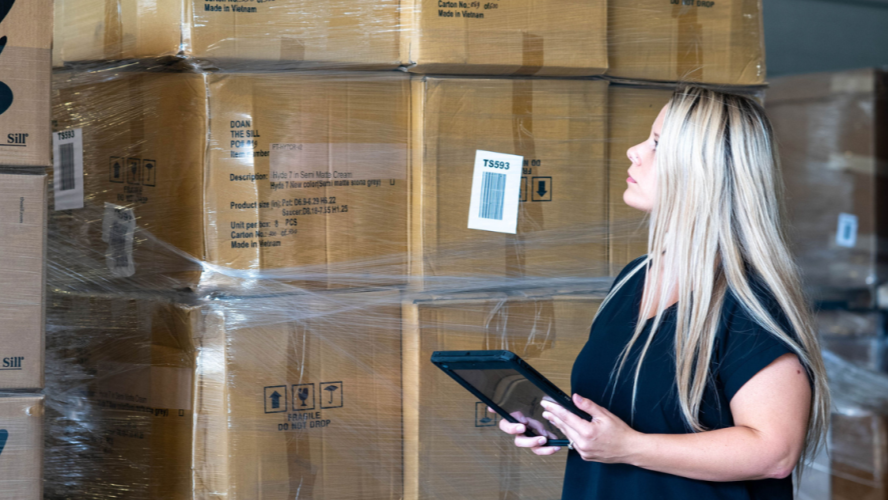Moving—whether residential or commercial—can be stressful and full of logistics. One of the most critical decisions during a move is determining where to keep your belongings or inventory while transitioning from one location to another. In such cases, two primary solutions come to mind: warehousing & storage. While the terms are sometimes used interchangeably, they serve different purposes. Knowing the differences and choosing the right option can save you time, money, and a lot of headaches.
In this guide, we’ll walk you through how to choose between a warehouse and a storage facility during a move, based on your specific needs.
What Is Storage?
Storage, typically known as self-storage, refers to secure spaces that individuals or businesses rent on a short-term basis. These facilities offer units of various sizes, often with flexible rental terms, where you store your belongings independently.
Key Features of Storage Facilities:
-
Available in multiple sizes, from small lockers to large rooms
-
Climate-controlled units for sensitive items
-
Easy and often 24/7 access
-
Minimal staff interaction
-
Short-term rental flexibility
Self-storage is best for individuals or small businesses during home moves, renovations, or decluttering projects.
What Is Warehousing?
Warehousing refers to a commercial or industrial storage solution where goods, equipment, or materials are stored, often in bulk. Warehousing facilities are designed to handle business needs and often include added services such as inventory management, pallet storage, order fulfillment, and transportation coordination.
Key Features of Warehousing:
-
Large-scale storage areas
-
Staff-managed logistics and operations
-
Ideal for inventory or bulk item storage
-
Long-term storage contracts
-
Loading docks, forklifts, and material handling services
Warehousing is ideal for businesses relocating offices, moving manufacturing operations, or managing supply chains during a transition.
Warehousing & Storage: Understanding the Differences
While both solutions offer a place to keep your items safe, warehousing & storage differ in several critical ways:
-
Purpose & Usage
-
Storage: Personal use, like furniture, boxes, documents, or household items.
-
Warehousing: Business use, such as inventory, machinery, or wholesale goods.
-
Services Offered
-
Storage: Self-service with limited assistance.
-
Warehousing: Full-service, often including inventory tracking, packing, and shipping.
-
Access
-
Storage: Customers can usually access their unit directly.
-
Warehousing: Access is controlled and typically managed by warehouse staff.
-
Size & Scale
-
Storage: Smaller units for personal or light commercial use.
-
Warehousing: Large spaces designed to accommodate pallets, containers, or large equipment.
-
Contract Type
-
Storage: Month-to-month rental with flexibility.
-
Warehousing: Longer-term leases, often with service-level agreements.
How to Choose During a Move
Whether you’re relocating your home or shifting business operations, deciding between warehousing & storage comes down to your specific situation.
Choose Storage If You’re:
-
A homeowner moving into a new place and need temporary space for personal items.
-
Renovating your home and need to clear furniture or appliances.
-
A small business owner storing light office supplies or documents during relocation.
-
Looking for a quick, budget-friendly solution with easy access.
Choose Warehousing If You’re:
-
A business with bulk inventory, equipment, or large shipments.
-
Relocating offices and require managed storage and logistics services.
-
An eCommerce business that needs fulfillment or inventory management during the move.
-
Looking for a structured, professional setup with added handling support.
Real-World Scenarios
-
Residential Move: Jane and her family are moving across the state and need to store furniture and boxes for two months while they close on their new home. A self-storage unit near her temporary apartment is the most convenient and cost-effective solution.
-
Commercial Move: A mid-size retail company is relocating its headquarters and needs to store inventory, office equipment, and point-of-sale devices. They choose a local warehousing facility that offers not only secure storage but also order tracking and scheduled delivery to their new location.
Hybrid Approaches
Some modern storage providers now offer hybrid solutions, combining aspects of both warehousing & storage. These might include self-storage units with optional handling services or small-scale business warehouses with flexible access.
If your needs fall somewhere in the middle—perhaps you need temporary access but also some handling support—a hybrid provider might be the ideal fit.
Cost Considerations
-
Storage units tend to be more budget-friendly due to their DIY nature.
-
Warehousing is more expensive but includes services that may save time and reduce labor costs.
-
Always ask about additional fees (handling, delivery, insurance) before signing a contract.
Tips for Making the Right Choice
-
List your inventory: Know what you’ll be storing and how much space you need.
-
Estimate duration: Short-term needs may be better suited for storage units.
-
Consider access: Do you need frequent, personal access or is professional handling preferred?
-
Compare costs and services: Don’t just go for the cheapest option—consider the value of services offered.
Final Thoughts
During a move, choosing between warehousing & storage is more than just picking a place to drop your items. It’s about finding a secure, efficient, and affordable solution tailored to your needs. Self-storage is ideal for individuals and small businesses needing convenience and flexibility. Warehousing, on the other hand, is a smart move for businesses managing large volumes, equipment, or needing professional logistics support.


